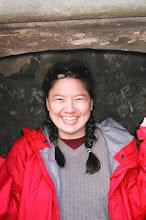Statistics
So, I have actually been working lately, just not writing in my blog about it much. Mostly I have been revising a paper about the subterranean ant probe, and spending a lot of time trying to understand statistics. So I have been reading a lot about species accumulation curves, analyses of similarity (ANOSIM -- provides a way to test statistically whether there is a significant difference between two or more groups of sampling units), similarity indices, estimated similarity indices, etc. etc. Here are a few tips I have learned: If you want to do ANOSIM, and have no money to buy the PRIMER software package, try the PAST software package, which is free, and easy to understand. If you want to do estimated similarity, and you have incidence (as opposed to abundance) data, the EstimateS software package is really confusing. Instead, I suggest using the SPADE software package, which can be found at Anne Chao's website. EstimateS is still the best way to produce accumulation curves.
Here are some sites I found helpful in figuring this stuff out:
An Annotated Bibliography of Similarity Indices in Ecology
Try this forum discussion for ideas about which analyses to use in which situations:
http://www.wcsmalaysia.org/stats/default.htm
Software links: http://www.okstate.edu/artsci/botany/ordinate/software.htm




